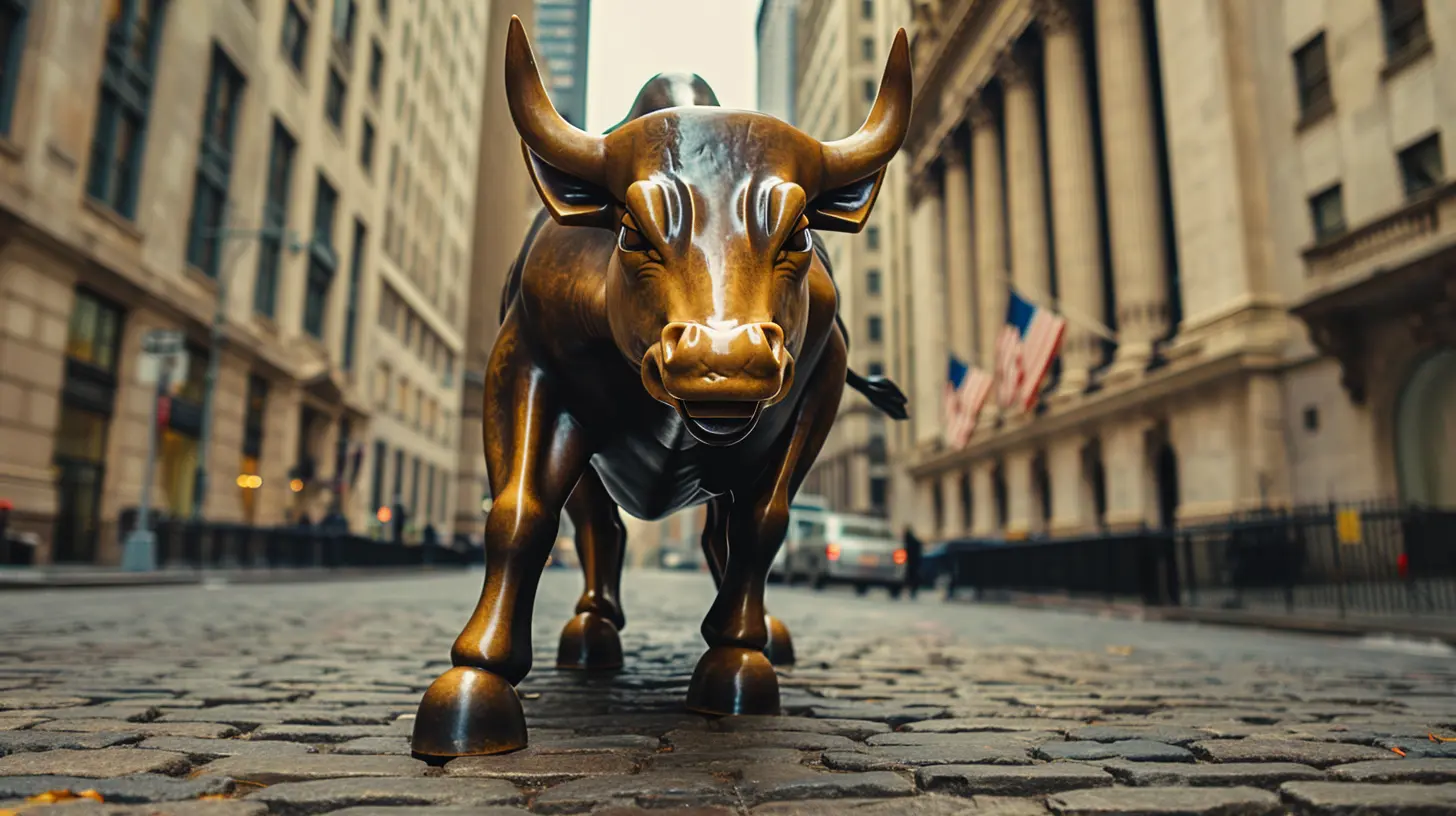How to Use ETFs to Build a Long-Term Wealth Portfolio
11 October 2025
Let’s talk about building wealth. Not quick cash, not risky bets, not trending stocks making headlines — I’m talking about real, sustainable, long-term wealth.
Imagine your financial future like building a house. It needs a solid foundation, sturdy walls, and the right tools. One of those tools? ETFs. Yep, Exchange-Traded Funds.
If you’ve ever felt overwhelmed by the stock market or unsure where to start investing, ETFs might be exactly what you need. They're simple, cost-effective, and built for the long haul.
So grab a cup of coffee, sit back, and let’s dig into how ETFs can be your ticket to long-term financial growth.
What Exactly Are ETFs?
Let’s not get too technical here. Think of ETFs (Exchange-Traded Funds) like a basket of groceries — except instead of fruits and veggies, this basket holds stocks, bonds, or even commodities.When you buy one share of an ETF, you’re essentially buying a slice of that entire basket. That means instant diversification.
And the cool part? ETFs trade on stock exchanges, just like individual stocks. So you can buy and sell them throughout the day, just like you would with Apple or Tesla stock.
Pretty neat, right?
Why ETFs for Long-Term Wealth?
There are a ton of investment vehicles out there — individual stocks, mutual funds, real estate, crypto… the list goes on. So why ETFs?Let’s break it down:
1. Diversification Without the Work
Buying individual stocks is like picking players for your fantasy football team. You need to know their stats, watch the game, and cross your fingers on game day.But ETFs do the work for you. They automatically spread your risk across multiple assets. If one stock in the fund performs poorly, the others balance it out.
2. Lower Costs
ETFs are notoriously low-cost. Many have expense ratios under 0.1%. Compare that to the 1%-2% fees some mutual funds charge, and you’re already saving more.Why does that matter?
Fees eat into returns. And over decades, even seemingly small fees can cost thousands of dollars.
3. Tax Efficient
We won’t go full IRS on you, but here’s the gist: ETFs are generally more tax-efficient than mutual funds. Thanks to something called the “in-kind redemption” process, ETFs don’t trigger as many capital gains.Less taxes = more money working for you.
4. Transparency
You can see exactly what’s in an ETF. No surprises, no secrets. That’s peace of mind.
How to Choose the Right ETFs for Your Portfolio
So now that we’ve sold you on the idea (hopefully), how do you actually choose which ETFs to invest in?1. Match Your Investment Goals
Are you saving for retirement? A house? Your kid’s education?Your goal defines your timeline and risk tolerance. Long-term goals (think 10+ years) can handle more market swings, so you might lean more into stock ETFs. Shorter-term goals? You’ll want to mix in bond ETFs or other conservative assets.
2. Keep It Broad
You don’t need to pick winners. Let the market do its thing.Look for ETFs that track broad indexes like:
- S&P 500 ETFs (e.g., SPY, VOO): These follow 500 of the biggest U.S. companies.
- Total Market ETFs (e.g., VTI): Exposure to practically the entire U.S. stock market.
- International ETFs (e.g., VXUS): Because the world is bigger than just the U.S.
3. Check the Fees
This part is easy. Lower fees = better. Always.A good rule of thumb? Stick to ETFs with expense ratios under 0.2% for your core holdings.
4. Look at Liquidity
If an ETF has low daily trading volume, it might be harder (and pricier) to buy and sell. Stick to well-known ETFs with high liquidity unless you have a specific strategy or reason.
Building a Sample Long-Term ETF Portfolio
Let’s say you're in your 30s, have a decent job, and want to start investing for retirement. You’re not a market wizard, but you want something that grows steadily over time.Here’s a super simple ETF-based portfolio to consider:
| ETF | Type | Allocation |
|-----|------|------------|
| VTI (Vanguard Total Stock Market) | U.S. stocks | 50% |
| VXUS (Vanguard Total International Stock) | International stocks | 30% |
| BND (Vanguard Total Bond Market) | U.S. bonds | 15% |
| BNDX (International Bond Index) | International bonds | 5% |
You’ve got global exposure. Stocks for growth. Bonds for stability. And all with fees way under 0.1%.
Don’t like Vanguard? No problem. Look for similar ETFs by iShares, Schwab, or SPDR. Just stay consistent with your strategy.
Rebalancing: The Secret Sauce
Investing isn’t a “set it and forget it” deal (even though it mostly is).Over time, some parts of your portfolio will perform better than others. That means your original percentages might get skewed.
Example: If stocks do great this year, your 80/20 stock-bond mix might turn into 90/10. That’s more risk than you signed up for.
Rebalancing once or twice a year brings everything back in line. It’s like giving your portfolio a quick tune-up.
Dollar-Cost Averaging: Steady Wins the Race
Trying to time the market is like trying to catch a falling knife. Most people — even professionals — get it wrong.Instead, try dollar-cost averaging (DCA). That’s just a fancy way of saying you invest a fixed amount every month, no matter what the market’s doing.
Market high? You buy fewer shares.
Market low? You buy more shares.
Over time, it smooths out the bumps and removes emotions from the equation.
What About Thematic ETFs?
You’ve probably heard of ETFs that focus on trends — clean energy, artificial intelligence, cannabis, you name it.They’re exciting, sure. And some people do well with them.
But be careful. These ETFs can be volatile and may not fit well into a long-term, low-risk portfolio.
Use them like hot sauce — a little dash for flavor. Don’t drown your meal in it.
Mistakes to Avoid When Investing in ETFs
Nobody’s perfect, and we all make rookie mistakes. But here are a few to steer clear of:1. Over-Diversifying
Yeah, believe it or not, you can be too diversified. Buying 15 different ETFs that all track the same kinds of stocks doesn't help — it just adds clutter.2. Chasing Performance
Don’t fall into the trap of buying last year’s top-performing ETF. Markets move in cycles. What worked yesterday might underperform tomorrow.3. Ignoring Asset Allocation
Even if you pick the best ETFs, it won’t matter if your risk level is off. Make sure your mix of stocks and bonds matches your personal risk tolerance and goals.4. Falling for High Fees
Repeat after me: Fees matter. Always double-check the expense ratio before buying any fund.ETFs vs. Mutual Funds vs. Stocks: What’s the Real Difference?
Let’s clear up the confusion real quick:- Individual Stocks: High risk, potentially high reward. But you need to research each one. Not easy for beginners.
- Mutual Funds: Managed by professionals, but often have higher fees and can’t be traded during the day.
- ETFs: Low fees, instant diversification, and flexibility. Kind of the best of both worlds.
Unless you’re ready to dive deep into stock picking or want hands-on active management, ETFs usually win out for long-term investing ease.
Staying the Course: Why Patience Is Your Biggest Asset
The biggest mistake you can make with ETFs — or any investing, really — is jumping ship too soon. Markets go up and down. Sometimes by a lot.But history has shown us that, over decades, markets trend up.
If you panic and sell when the market drops, you lock in those losses. If you stay the course, you give your investments time to recover — and then some.
Think of it this way: You wouldn’t dig up a tree after one week because it didn’t grow. Same goes for your portfolio.
Water it. Give it sunlight. Be patient.
Final Thoughts: Start Small, Think Big
Here’s the truth: You don’t need to be rich to start building wealth. You just need a plan — and consistency.ETFs make it easier than ever for regular folks to invest like the pros. You get built-in diversification, low fees, and a path to long-term growth without needing a PhD in finance.
Start with what you can. $50. $100. Whatever. Just get the ball rolling.
Your future self will thank you.
all images in this post were generated using AI tools
Category:
Wealth CreationAuthor:

Uther Graham
Discussion
rate this article
1 comments
Anisa McKeever
Great insights on using ETFs for long-term wealth building! Your breakdown of strategies and diversified options makes it accessible for both novice and experienced investors. Thank you for sharing!
October 17, 2025 at 10:50 AM

Uther Graham
Thank you for your kind words! I'm glad you found the insights helpful for all investors. Happy investing!


